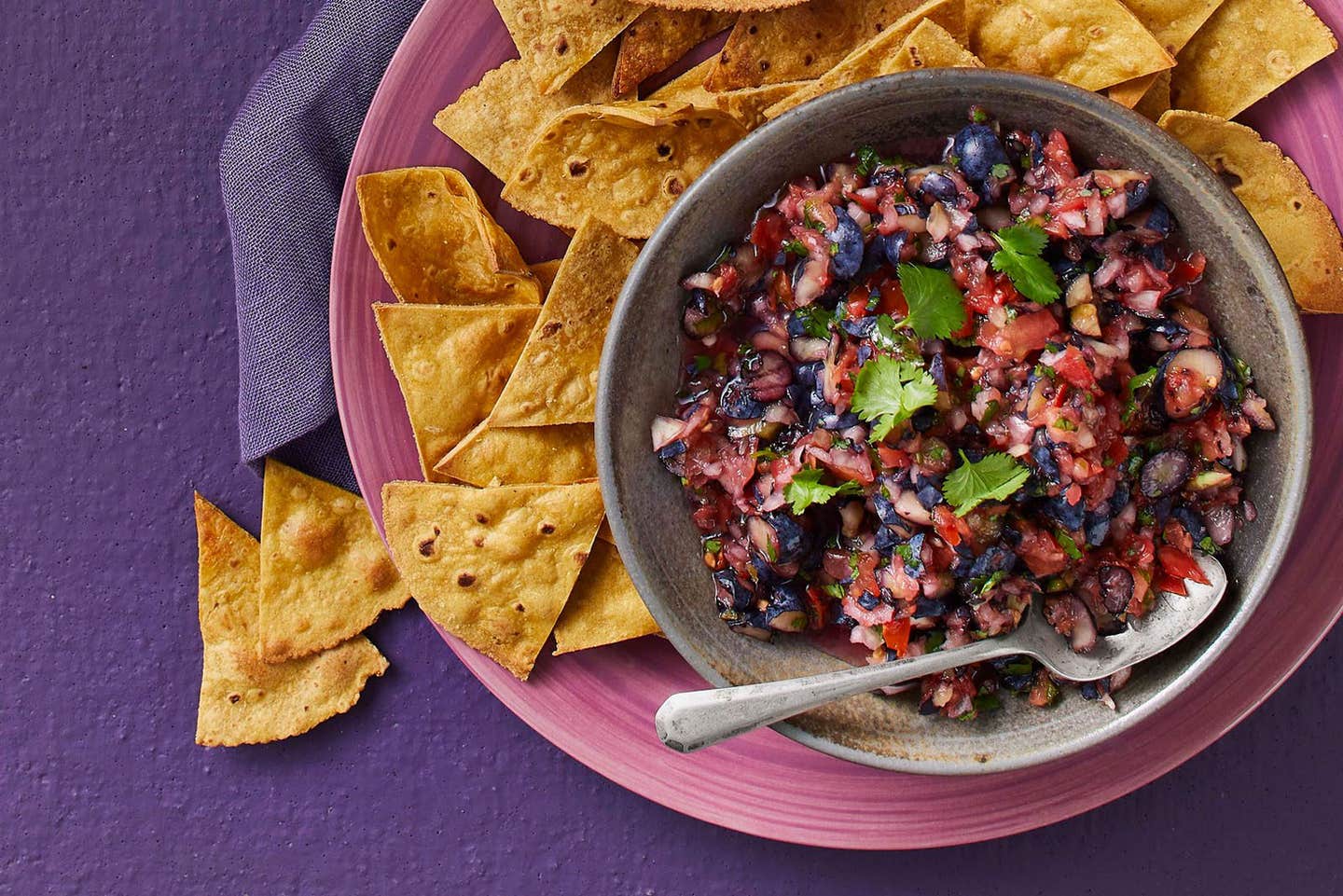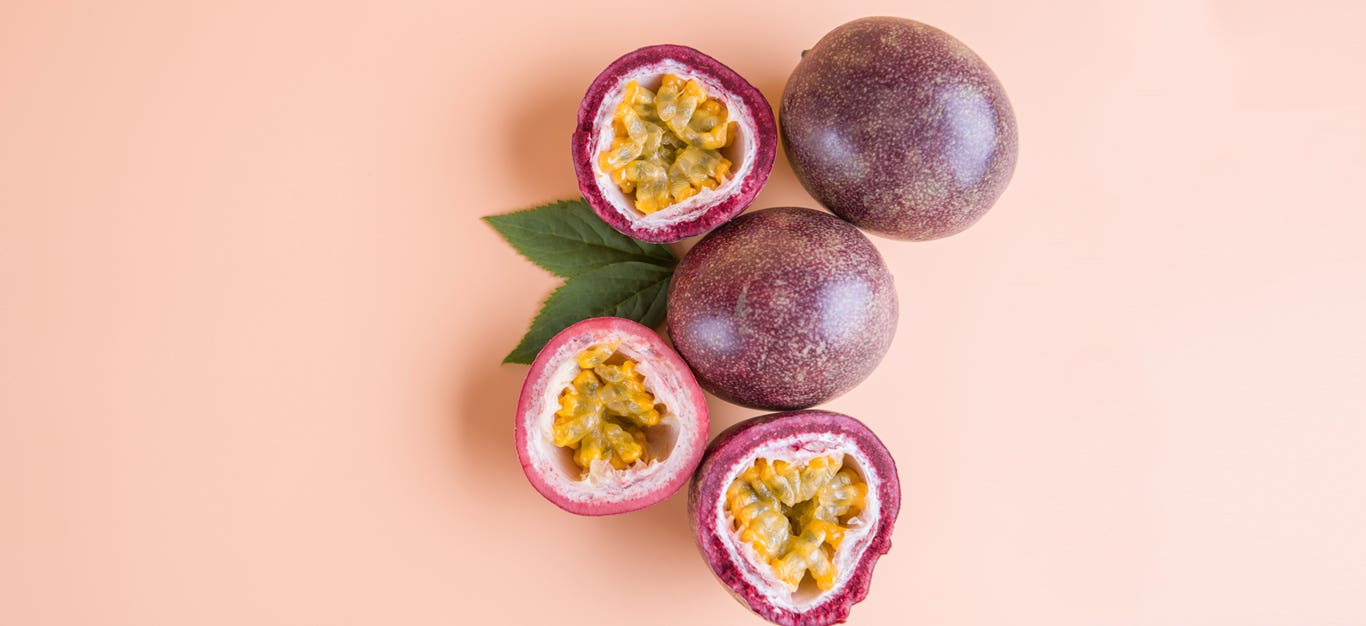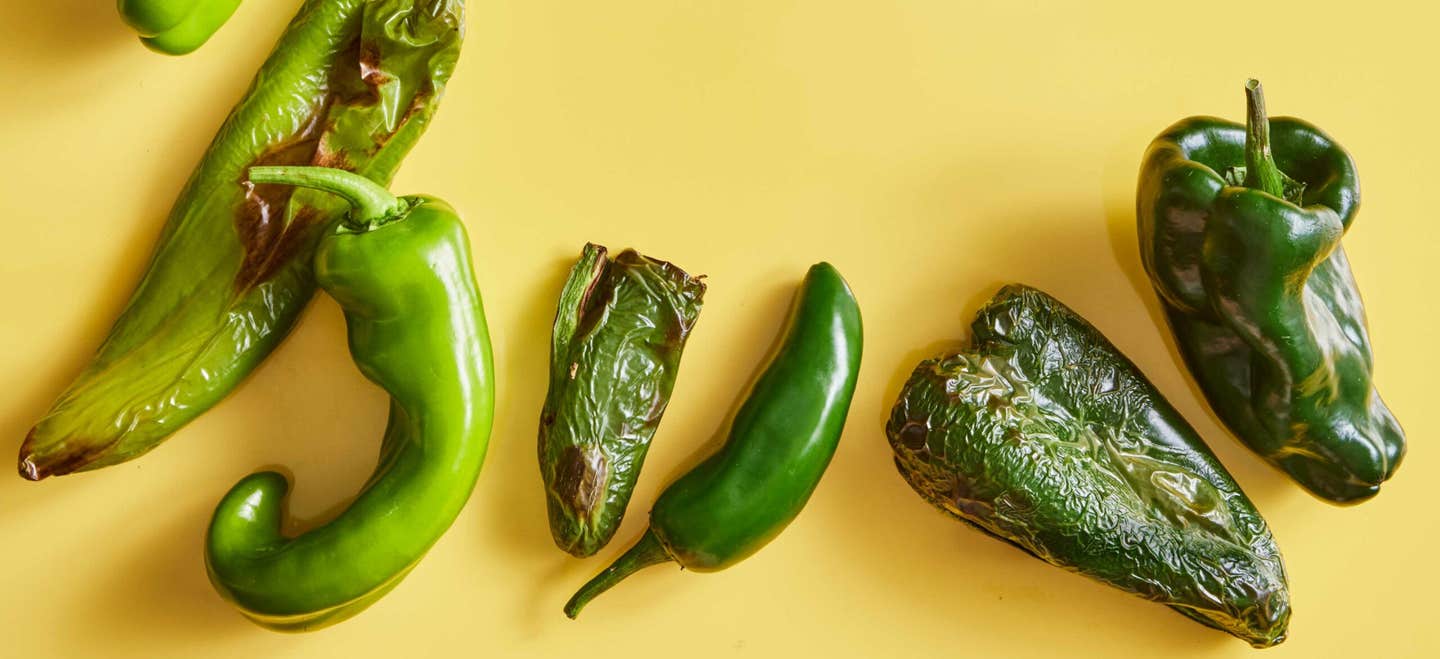Love the flavors of Mexican and Southwestern food? Time to add tomatillos to your weekly grocery list. The small, husked globes are a key ingredient in both cuisines, right up there with tomatoes (no, they’re not the same), corn, and chiles. Tomatillos are also a cinch to cook with, whether you’re blending up a quick salsa verde (aka tomatillo salsa) or using them to add tangy flavor to stews, salads, sauces, casseroles, and bean dishes. Here's everything you need to know to make tomatillos a staple in your kitchen, including how to select, store, and prepare them for the best flavor; the peeling hack you have to try; and a speedy salsa verde recipe.
What’s the Difference Between Tomatillos and Tomatoes?
The word “tomatillo” means little tomato in Spanish, and in most parts of Mexico, tomatillos are called tomates verdes, or green tomatoes. But while tomatillos may look and taste a lot like small green tomatoes, the papery husk that encases a tomatillo is one giveaway that they’re not the same thing. Tomatillos are nightshades like tomatoes, but they’re more closely related to Cape gooseberries (ground cherries), those small golden fruits with papery casings that are often used to decorate cakes and fruit salads. Tomatillos’ flavor is fruitier than tomatoes, as well, with tangy, earthy notes you won’t find in a green roma or beefsteak. Tomatillos also have firmer flesh and a higher pectin content than tomatoes, which keeps them thicker and saucier when cooked and/or blended.
When Are Tomatillos in Season?
Like tomatoes, tomatillos do best (and taste best) when grown in warm, sunny conditions. They’re in season year-round in Mexico and reach their peak availability in the United States in the summer and early fall. Because tomatillos aren’t as perishable or as reliant on optimal growing conditions for their flavor as tomatoes are, you can enjoy their unique taste any time of year.
Tomatillo Shopping and Storage
Tomatillos develop inside lantern-shaped husks, which dry out and begin to split when the fruits have fully matured. As tomatillos ripen, they turn from bright green to gold and even purple. Green tomatillos will have a tart flavor and bright green color even after they’re cooked; yellow and purple tomatillos tend to be sweeter and will become more golden than green when cooked. When shopping, choose small to medium tomatillos with greenish-tan husks that are still on the fruit and have begun to split. Tightly closed or loose husks are an indication the tomatillos were picked underripe and could be sour or even bitter. Store tomatillos in their husks in a paper bag for up to several weeks in the fridge.
How many tomatillos are in a pound?
On average, there are 8–10 medium tomatillos or 14 or 16 small tomatillos in a pound.
20-Second Tomatillo Peeling Trick
Tomatillos are coated in a papery husk and, beneath that, a sticky sap that needs to be washed off. The fastest way to take care of both tasks at once is to place the whole, unhusked tomatillos in a large heatproof bowl and pour enough boiling water over top to cover by 1 inch. Let the tomatillos stand in the hot water 10 to 15 seconds, then drain. This loosens the husks so they slip off easily and washes away the sap in the process.
How to Cook With Tomatillos
There are three ways to use tomatillos in the kitchen: fresh, boiled, and roasted.
Fresh
Remove husks and wash the sap from raw tomatillos. (You can do this by hand or use the trick above.) Slice thinly or chop the tomatillos. Add them to sandwiches and salads.
Boiled
Boiling tomatillos is a quick, convenient way to cook them before pureeing them. Simply cook whole tomatillos in boiling water 2 to 4 minutes or until just softened. Let cool, then remove the husks. Purée tomatillos in a food processor or blender. Add to soups, sauces, grain dishes, and salad dressings.
Roasted
Roasting tomatillos gives them a smokier, sweeter flavor than boiling. Broil whole tomatillos (husks removed) on a baking sheet until browned and blackened all over. Cool, then chop or blend. Use in sauces, stews, grain dishes, and casseroles.
Speedy Salsa Verde
5 minutes | Makes 1½ cups
Tomatillos are probably best known as the main ingredient in salsa verde. Here’s a quick version of the popular sauce that can be used in recipes that call for salsa verde or simply served alongside some home-baked tortilla chips.
*Chile peppers contain oils that can irritate your skin and eyes. Wear plastic or rubber gloves when working with them.
Ingredients
- ½ cup chopped white onion
- ½ cup fresh cilantro leaves
- 1 small jalapeño chile, halved and seeded*
- 1 clove garlic, peeled
- 1 lb. (8 to 10) fresh, boiled, or roasted tomatillos (see “How to Cook With Tomatillos,” above)
- Lime juice (optional)
Instructions
Blend the onion, cilantro, jalapeño, and garlic in a food processor until finely chopped. Add the tomatillos, and pulse until desired consistency is obtained. (It can be chunky or ultra-smooth.) Season with lime juice, if you like.
More Tomatillo Recipes
Cooking with tomatillos can be as easy as using prepared salsa verde in a healthy taco casserole or a platter of Vegan Nachos Verde. If you want to start with fresh tomatillos, here are a few recipes to try, as well.

Related News
Get Our Best Price On The Forks Meal Planner

Forks Meal Planner takes the guess work out of making nutritious meals the whole family will enjoy.
SAVE $200 ON OUR ULTIMATE COURSE

Join our best-selling course at a new lower price!



